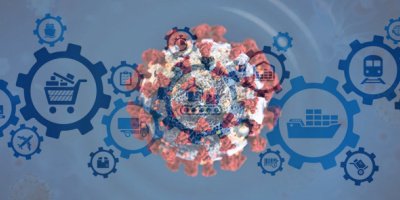As I explained in my article last week, the IT industry is on the verge of an enormous battle that will determine whether most companies get their IT capacity from computing utilities and, if they do, which vendors' technologies they'll use. At this point, only a fool--or an IT consultant with an oversized sense of himself--would dare predict the outcome of this contest. No matter who wins, however, it is safe to say that mid-market IT professionals will be doing more of the following two things over the next several years.
- Working with software that has Web services built into it. Nearly all of your software vendors will introduce releases with new features that rely on IT services that are delivered via the Internet. In many cases, vendors will support those services through their own data centers or those of a contracted service provider. Other services will be provided by the vendors' business partners; these partners may be software vendors themselves, but they may also be systems vendors like IBM, large enterprises, or self-styled computing utilities.
- Connecting to and supporting Web services. Initially, your company may resist the temptation to use the new Web services. Eventually, however, the business benefits of some service will exceed the perceived risks, and you'll be asked to deploy and support a connection to that service. Just as PCs slipped into companies in the 1980s and forced IT departments to learn how to manage client/server networks, Web services will slip into your company and force you to learn how to manage distributed Internet computing.
As a growing number of firms connects to Web services via their enterprise software, the providers of those services may become the giant computing utilities that IBM dreams of controlling. Then again, those providers might remain relatively small and numerous, as Microsoft envisions. Either way, you will have to learn a substantially new set of skills to remain viable as an IT professional. If you anticipate being in this business five to ten years from now, you need to take the following three actions.
First, learn how to work with at least one of the major middleware platforms that supports Web services, as well as the development tools that support them. These middleware platforms--be they from IBM, BEA, Microsoft, Sun, or others--are the primary delivery vehicles for Web services. In choosing your middleware platform, consider which platforms your software vendors are favoring. These should be at the top of your "to learn" list.
Since most of you work with vendors that have significant partnerships with IBM, WebSphere will probably be your first middleware priority. That makes the next several months extremely important for you, as IBM will be making significant WebSphere and Web services announcements during the fourth quarter. Most importantly, IBM plans to ship WebSphere Application Server Version 5, the first version to include extensive support for Web services technologies. IBM sources indicate that the iSeries will support two of the products in the Version 5 family: the standard WebSphere Application Server and WebSphere Application Server - Express. The latter product will come with a price tag that makes it significantly less expensive than WebSphere Application Server 4.0, though it will not offer the Web services support of more robust products in the WebSphere family. Look for IBM to offer specifics about these products soon--perhaps as early as this fall's COMMON Conference.
Second, become proficient in Linux and/or Windows, as these operating systems will host the vast majority of Web services over the coming years. It would be wonderful if middleware could totally insulate IT professionals from having to know about the underlying operating system, but that is not the case. Middleware interacts with operating systems in surprising ways that those who support Web services will have to understand. That will especially be the case for Microsoft's .NET middleware, which will be tightly integrated with the Windows operating system. However, even application servers that strictly comply with the Java 2 Enterprise Edition (J2EE) standard will run differently on various Linux distributions and Windows releases.
Finally, keep yourself current on the evolving systems management tools of the middleware platforms and operating systems you're studying. These tools are going to evolve rapidly over the next several years because they will have to communicate over the Internet with systems that are delivering Web services. They will also become far more intelligent and self-managing than they are today. As such, the next generation of systems management tools could make your new job of supporting Web services much easier.
That concludes my article series on IBM's mid-market strategy. I hope it has given you a better understanding of how IBM's various product and marketing strategies fit together and where they could take us. Just as importantly, I hope these articles empower you to develop your own IT strategy for your company and your professional career. I'll be back next week with news and analyses to help you achieve that objective.
Lee Kroon is a Senior Industry Analyst for Andrews Consulting Group, a firm that helps mid-sized companies manage business transformation through technology. You can reach him at






















 More than ever, there is a demand for IT to deliver innovation. Your IBM i has been an essential part of your business operations for years. However, your organization may struggle to maintain the current system and implement new projects. The thousands of customers we've worked with and surveyed state that expectations regarding the digital footprint and vision of the company are not aligned with the current IT environment.
More than ever, there is a demand for IT to deliver innovation. Your IBM i has been an essential part of your business operations for years. However, your organization may struggle to maintain the current system and implement new projects. The thousands of customers we've worked with and surveyed state that expectations regarding the digital footprint and vision of the company are not aligned with the current IT environment. TRY the one package that solves all your document design and printing challenges on all your platforms. Produce bar code labels, electronic forms, ad hoc reports, and RFID tags – without programming! MarkMagic is the only document design and print solution that combines report writing, WYSIWYG label and forms design, and conditional printing in one integrated product. Make sure your data survives when catastrophe hits. Request your trial now! Request Now.
TRY the one package that solves all your document design and printing challenges on all your platforms. Produce bar code labels, electronic forms, ad hoc reports, and RFID tags – without programming! MarkMagic is the only document design and print solution that combines report writing, WYSIWYG label and forms design, and conditional printing in one integrated product. Make sure your data survives when catastrophe hits. Request your trial now! Request Now. Forms of ransomware has been around for over 30 years, and with more and more organizations suffering attacks each year, it continues to endure. What has made ransomware such a durable threat and what is the best way to combat it? In order to prevent ransomware, organizations must first understand how it works.
Forms of ransomware has been around for over 30 years, and with more and more organizations suffering attacks each year, it continues to endure. What has made ransomware such a durable threat and what is the best way to combat it? In order to prevent ransomware, organizations must first understand how it works. Disaster protection is vital to every business. Yet, it often consists of patched together procedures that are prone to error. From automatic backups to data encryption to media management, Robot automates the routine (yet often complex) tasks of iSeries backup and recovery, saving you time and money and making the process safer and more reliable. Automate your backups with the Robot Backup and Recovery Solution. Key features include:
Disaster protection is vital to every business. Yet, it often consists of patched together procedures that are prone to error. From automatic backups to data encryption to media management, Robot automates the routine (yet often complex) tasks of iSeries backup and recovery, saving you time and money and making the process safer and more reliable. Automate your backups with the Robot Backup and Recovery Solution. Key features include: Business users want new applications now. Market and regulatory pressures require faster application updates and delivery into production. Your IBM i developers may be approaching retirement, and you see no sure way to fill their positions with experienced developers. In addition, you may be caught between maintaining your existing applications and the uncertainty of moving to something new.
Business users want new applications now. Market and regulatory pressures require faster application updates and delivery into production. Your IBM i developers may be approaching retirement, and you see no sure way to fill their positions with experienced developers. In addition, you may be caught between maintaining your existing applications and the uncertainty of moving to something new. IT managers hoping to find new IBM i talent are discovering that the pool of experienced RPG programmers and operators or administrators with intimate knowledge of the operating system and the applications that run on it is small. This begs the question: How will you manage the platform that supports such a big part of your business? This guide offers strategies and software suggestions to help you plan IT staffing and resources and smooth the transition after your AS/400 talent retires. Read on to learn:
IT managers hoping to find new IBM i talent are discovering that the pool of experienced RPG programmers and operators or administrators with intimate knowledge of the operating system and the applications that run on it is small. This begs the question: How will you manage the platform that supports such a big part of your business? This guide offers strategies and software suggestions to help you plan IT staffing and resources and smooth the transition after your AS/400 talent retires. Read on to learn:
LATEST COMMENTS
MC Press Online